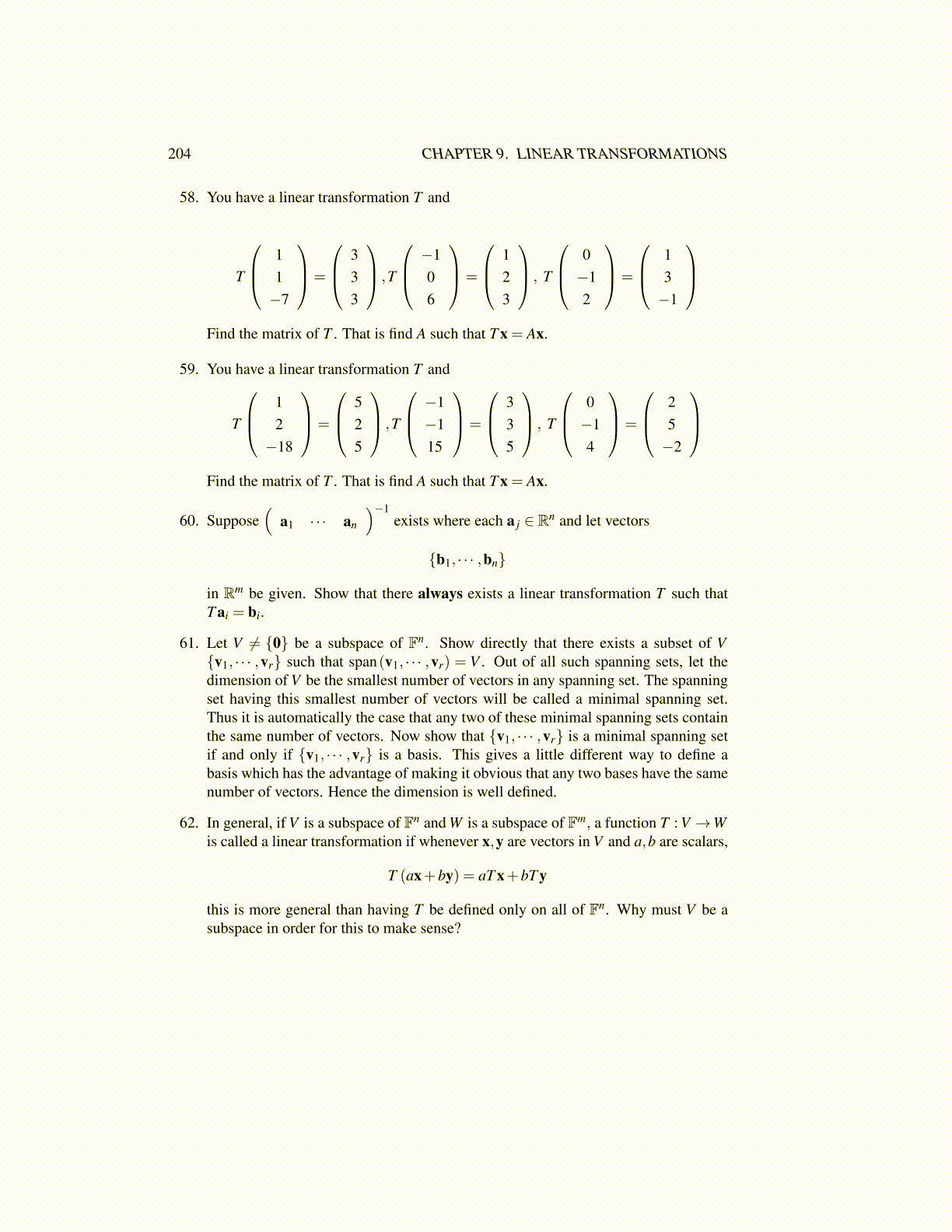
204 CHAPTER 9. LINEAR TRANSFORMATIONS
58. You have a linear transformation T and
T
11−7
=
333
,T
−106
=
123
, T
0−12
=
13−1
Find the matrix of T . That is find A such that T x = Ax.
59. You have a linear transformation T and
T
12−18
=
525
,T
−1−115
=
335
, T
0−14
=
25−2
Find the matrix of T . That is find A such that T x = Ax.
60. Suppose(
a1 · · · an
)−1exists where each a j ∈ Rn and let vectors
{b1, · · · ,bn}
in Rm be given. Show that there always exists a linear transformation T such thatT ai = bi.
61. Let V ̸= {0} be a subspace of Fn. Show directly that there exists a subset of V{v1, · · · ,vr} such that span(v1, · · · ,vr) = V . Out of all such spanning sets, let thedimension of V be the smallest number of vectors in any spanning set. The spanningset having this smallest number of vectors will be called a minimal spanning set.Thus it is automatically the case that any two of these minimal spanning sets containthe same number of vectors. Now show that {v1, · · · ,vr} is a minimal spanning setif and only if {v1, · · · ,vr} is a basis. This gives a little different way to define abasis which has the advantage of making it obvious that any two bases have the samenumber of vectors. Hence the dimension is well defined.
62. In general, if V is a subspace of Fn and W is a subspace of Fm, a function T : V →Wis called a linear transformation if whenever x,y are vectors in V and a,b are scalars,
T (ax+by) = aT x+bT y
this is more general than having T be defined only on all of Fn. Why must V be asubspace in order for this to make sense?